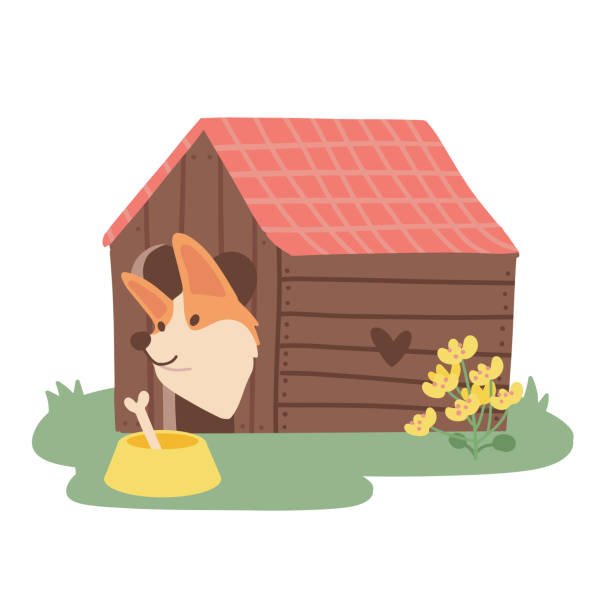Barkitecture: A Tail-Wagging Journey into the Lives of Dogs and Their Unique Personalities
In the realm of companionship, dogs stand out as not just pets but as individuals with distinct personalities, quirks, and a unique presence that enriches the lives of their human counterparts. The term “Barkitecture” encapsulates the idea that dogs are not just residents in our homes; they are architects of a special kind, shaping the very fabric of our lives. This tail-wagging journey delves into the intricate world of Barkitecture, exploring the ways in which dogs contribute to the dynamics of our homes and families.
Canine Personalities: A Kaleidoscope of Traits:
Just as no two humans are alike, the same holds true for dogs. Canine personalities span a vast spectrum, encompassing traits that range from playful and exuberant to calm and contemplative. Some dogs are social butterflies, relishing in the company of both humans and fellow canines, while others may lean towards introversion, enjoying quiet moments of reflection. Understanding and appreciating these individual personalities is a key aspect of the Barkitecture experience.
Home as a Reflection of Canine Individuality:
Barkitecture extends beyond the physical structures of our homes to encompass the very essence of our living spaces. Dogs, with their unique personalities, leave an indelible mark on the character of our homes. From the placement of their favorite toys to the choice of cozy resting spots, each element is a reflection of their individuality. The home becomes a canvas where canine architects paint their stories through wagging tails, paw prints, and the comforting rhythm of their presence.
Tail-Wagging Interiors: Designing Spaces for Dogs:
As the concept of Barkitecture gains popularity, interior design is evolving to cater to the needs and preferences of both humans and their canine companions. Thoughtful design elements such as pet-friendly furniture, designated play areas, and cozy nooks for napping seamlessly integrate into the overall aesthetics of a home. The result is not just a living space but a harmonious environment that accommodates the diverse needs of both human and canine occupants.
Canine-Driven Routines: Shaping Daily Life:
Dogs are masters at establishing routines, and their daily rituals become an integral part of the Barkitecture experience. From the morning excitement of walks and playtime to the evening snuggles on the couch, dogs contribute to the rhythm of daily life in profound ways. These routines, driven by the needs and desires of our canine companions, create a sense of structure and purpose, fostering a deeper connection between humans and their four-legged architects.
Canine Co-Parenting: Navigating Family Dynamics:
For many families, dogs are not just pets but beloved members who play a significant role in shaping family dynamics. The concept of Barkitecture extends to co-parenting, where dogs contribute to the nurturing and bonding experiences within the household. The responsibilities of feeding, grooming, and providing companionship become shared endeavors, strengthening the familial bonds and creating a sense of unity that transcends species.
Canine Expression: Artistic Elements in Barkitecture:
Dogs are natural artists, expressing themselves through various forms of play, exploration, and even the occasional mischief. The presence of artistic elements in Barkitecture goes beyond conventional notions, incorporating the spontaneous creativity of our canine companions. From paw-printed masterpieces to strategically arranged toys, dogs infuse artistic flair into our homes, adding a touch of whimsy and individuality to the living spaces they co-create.
Canine Communication: Barks, Whines, and Tail Wags:
Communication between humans and dogs is a nuanced dance that involves more than just spoken words. Barks, whines, tail wags, and subtle body language create a rich tapestry of communication that deepens the understanding between species. In the realm of Barkitecture, these forms of expression become integral in deciphering the needs, emotions, and desires of our canine architects, fostering a level of communication that goes beyond linguistic barriers.
The Healing Presence of Dogs: Barkitecture as Therapy:
The therapeutic impact of dogs on human well-being is a well-documented phenomenon. Dogs have an innate ability to provide emotional support, alleviate stress, and offer a sense of companionship that transcends words. In Barkitecture, the healing presence of dogs is woven into the very fabric of home life, creating an environment where unconditional love and acceptance become integral elements of the daily experience.
Canine Legacy: Paw Prints on Our Hearts:
As time passes, dogs leave an indelible imprint on our lives, becoming a cherished part of our personal histories. The concept of Barkitecture extends to the legacy that dogs leave behind—the paw prints on our hearts. Each wagging tail, every shared moment of joy, and the deep connections forged with our canine architects become an enduring part of the story of our lives, shaping the very essence of who we are.
Conclusion:
In the enchanting world of Barkitecture, dogs transcend the role of mere companions and become architects of a unique and cherished experience. From shaping the physical spaces we inhabit to influencing the daily rhythms of our lives, dogs contribute a richness that goes beyond the superficial. Barkitecture is a celebration of the individuality, love, and joy that dogs bring into our homes, creating a tapestry of memories and experiences that define the extraordinary bond between humans and their four-legged architects. As we embark on this tail-wagging journey, we discover that Barkitecture is not just a concept—it’s a heartfelt acknowledgment of the profound impact dogs have on the canvas of our lives.





